Tourism forecasts for Australia
Summarises the outlook for domestic and international tourism in Australia.
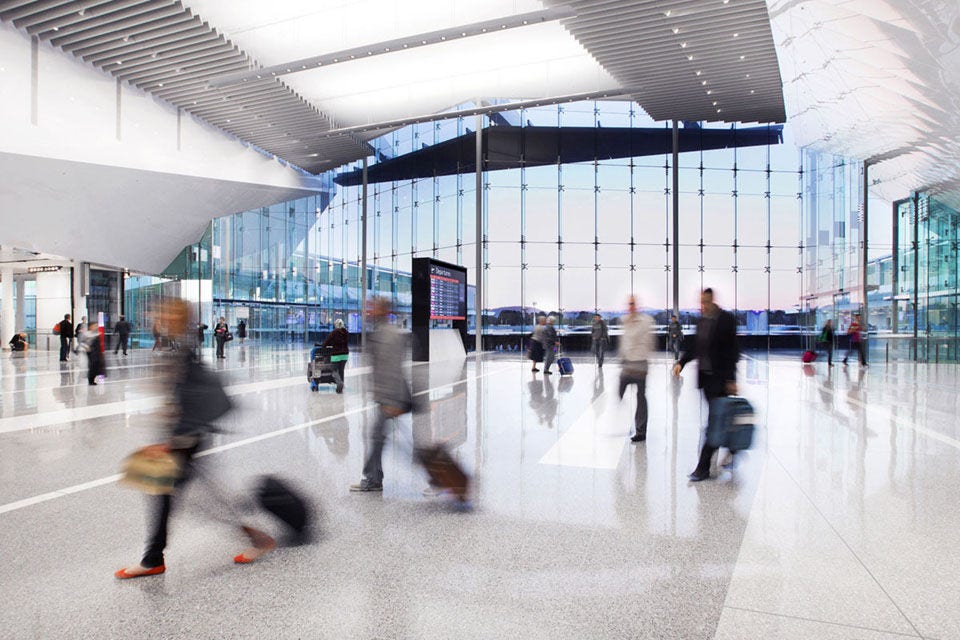

Main content
Tourism forecasts for australia 2023 to 2028.
TRA produces tourism forecasts for Australia. This year, we produced:
- international forecasts at the national level and for many markets and purposes of travel
- domestic forecasts at the national level and for each state and territory.
The forecasts cover the 5-year forward period, 2023 to 2028, on a calendar year basis. Forecast data are available to download at the bottom of this page.
The report contains a written summary and analysis of the forecast data. It presents an overview of the outlook and discusses the drivers and implications of the projected path forward for the tourism sector. It also notes some key risks to the forecasts.
Download the report
Tourism forecasts for Australia 2023-2028
Visitor economy outlook
The report forecasts a positive outlook for the visitor economy. In the next 5 years, we predict both international and domestic tourism will continue to grow. We expect:
- international travel to Australia will exceed its pre-pandemic level in 2025
- international spend in Australia will exceed its pre-pandemic level in 2024
- domestic travel will stabilise in 2023, after strong growth in 2022
- domestic tourism spend, which already exceeds its pre-pandemic level, will continue to rise
- domestic tourism nights in all states and territories will recover to pre-pandemic levels.
Our forecasting method
TRA produces forecasts using a hybrid, evidence-based approach. This method combines data-based analysis and modelling with expert judgement. Insights from the Tourism Forecasting Expert Panel are a critical component of TRA’s forecasting process. The Panel:
- offers long-standing support for TRA’s forecasting work
- is a source of broad-based, respected and constructive intelligence that informs the tourism forecasts
- comprises academics, industry and government specialists, and representatives from the state and territory tourism organisations
- provided input to this year’s forecasting work through survey responses, high-level discussions, and feedback on draft forecast data.
Download the data
Domestic forecasts 2023-2028 data tables
International forecasts 2023-2028 data tables
Contact TRA
mail tourism.research@tra.gov.au
Previous reports
Tourism forecasts 2022-2027, tourism forecasts 2021-2026, related content, domestic tourism results.
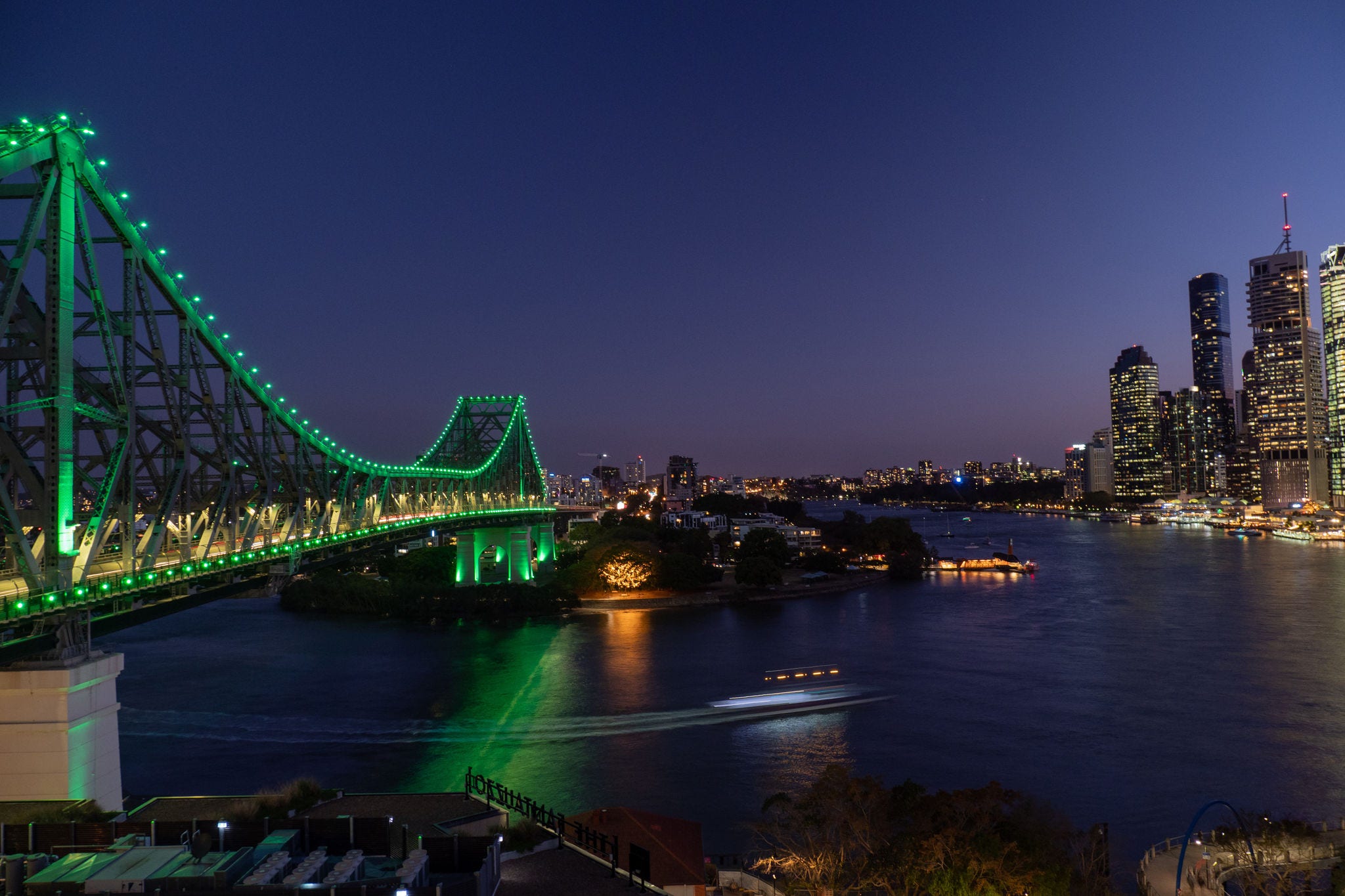
International tourism results
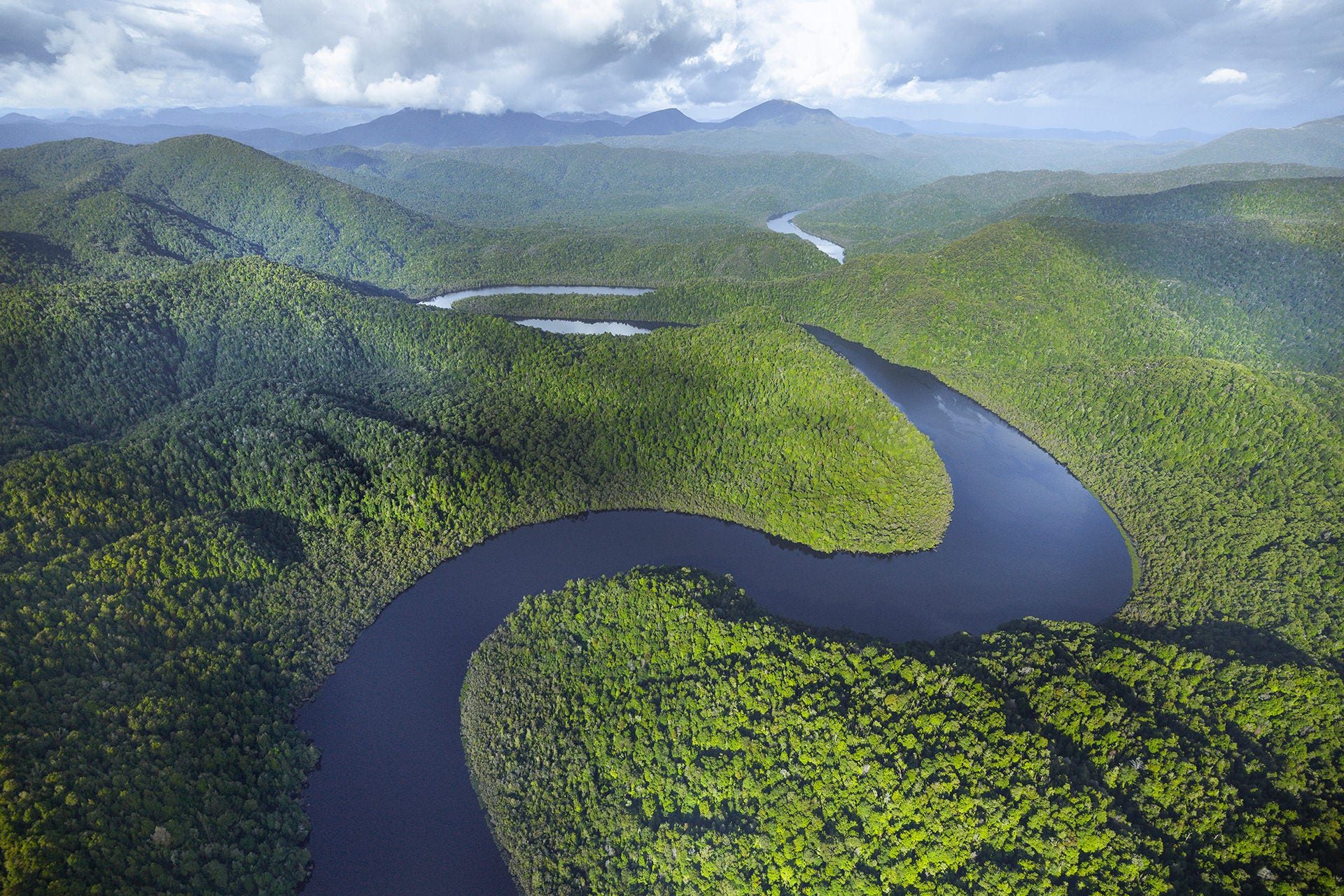
Tourism Investment Monitor
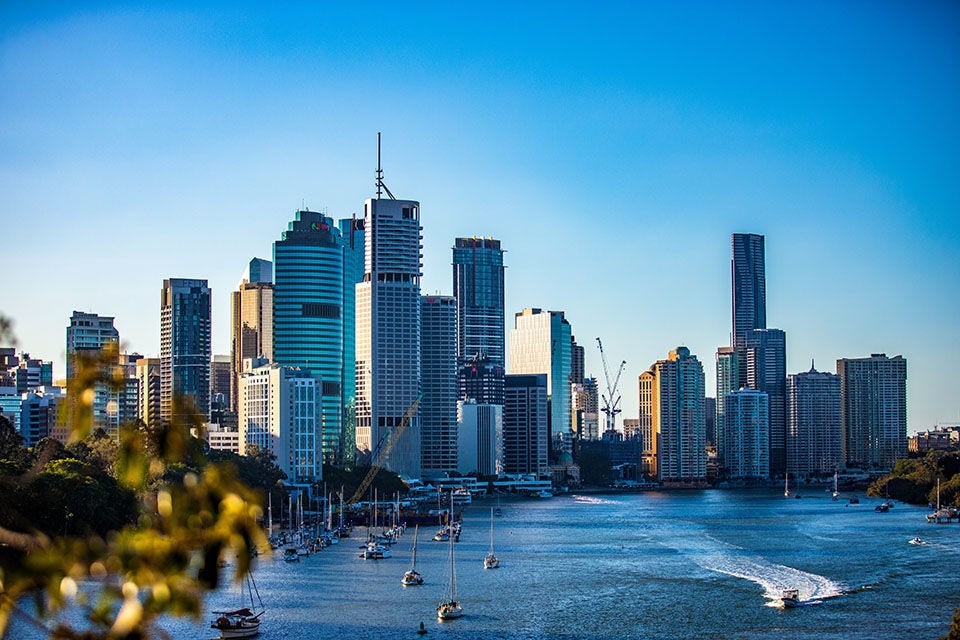
Footer content

No spam. We promise.

Economic Impact Report 2023 Global Trends
Create an account for free or login to download
Report details
The report also includes discussions of the following themes:
• City Travel is Back • Consumer Trends • Travel & Tourism Investment • Environmental and Social Research (ESR) • Sustainable Aviation Fuel (SAF) • Steps to Sustainability • Capacity Constraints
Lastly, the report contains rankings tables (top 20 countries) for the following indicators:
• Travel & Tourism Total Contribution to GDP • Travel & Tourism Relative Contribution to GDP • Travel & Tourism Total Contribution to Employment • Domestic Visitor Spending • International Visitor Spending • Travel & Tourism Investment • Travel & Tourism Forecast Growth (2023 –2033)
Purchase of this report also provides access to two supporting papers: Methodology and Data Sources and Estimation Techniques.
In collaboration with
Supported by.

Non-Members
Related products.
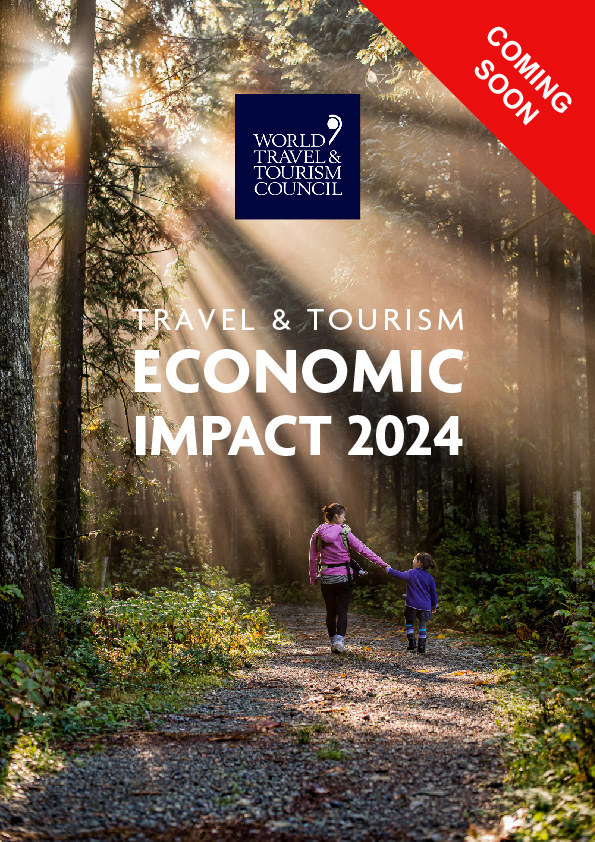
Belgium Economic Impact Report

Brunei Darussalam Economic Impact Report

Americas Economic Impact Report
- Environment
- Road to Net Zero
- Art & Design
- Film & TV
- Music & On-stage
- Pop Culture
- Fashion & Beauty
- Home & Garden
- Things to do
- Combat Sports
- Horse Racing
- Beyond the Headlines
- Trending Middle East
- Business Extra
- Culture Bites
- Year of Elections
- Pocketful of Dirhams
- Books of My Life
- Iraq: 20 Years On
Global tourism sector recovering faster than expected this year, WTTC says
Total tourism arrivals worldwide are expected to grow 5 per cent in 2023.

A baby mountain gorilla in the Sabyinyo Mountains of Rwanda. The country is the first African host of the ongoing World Travel and Tourism Council's annual global summit. AFP

The global tourism sector is rebounding at a faster pace than expected this year, despite macroeconomic and geopolitical tensions, but environmental sustainability must be central to its recovery.
That is according to the latest global tourism outlook revealed by the World Travel and Tourism Council on Wednesday at its annual global summit, held for the first time in Africa, in the Rwandan capital Kigali.
Total tourism arrivals worldwide are expected to grow 5 per cent in 2023, compared to 2019, according to WTTC's latest forecast in partnership with Oxford Economics. That is an improvement on the 2 per cent the organisation predicted in March.
“Despite economic and geopolitical turmoil in 2023, we're seeing that this year so far is showing a faster recovery than our initial expectations,” Julia Simpson, the WTTC's president and chief executive, said at the summit's opening press briefing.
“Our previous predictions in March have now been exceeded by travel and tourism's current performance … every single region is growing faster than we had originally predicted.
“Once again, our sector has shown its true resilience and grit in the reopening after the pandemic.”

Tourism arrivals into the Middle East are set to rise 28 per cent this year, from their pre-Covid levels, the October forecast showed. The organisation in March had predicted 22 per cent growth.
Asked specifically about the impact of the Russia-Ukraine and Israel-Gaza wars on the recovery of global tourism, Ms Simpson said: “All I can say is that the WTTC, as an organisation that represents travel and tourism, we stand for peace, we stand for building bridges and we stand for connecting people.”
Airlines in the Middle East have said that the Israel-Gaza war has led to a drop in air travel to the region , as the conflict rages on amid international calls to halt the fighting to ease the humanitarian disaster in the enclave.
Challenges include costly flight diversions for security reasons, steep fuel bills and a drop in international visitors.
The global travel and tourism sector contributed to more than 10 per cent of the global gross domestic product in 2019, with the industry worth $10 trillion.
It lost about 50 per cent of its value during the Covid-19 pandemic, making it one of the hardest hit sectors.
So far this year, the sector has nearly recovered to its pre-Covid levels, according to the WTTC.
Travel and tourism is expected to contribute 9.2 per cent to the global GDP at a value of $9.5 trillion in 2023, just 5 per cent below its 2019 levels. That is a 23.3 per cent year-on-year increase from the $7.7 trillion recorded in 2022.
“We are very resilient, we come back. It's deep in our DNA to travel and to connect,” Ms Simpson said.
Winston Duke speaks in Saudi Arabia for World Tourism Day

The industry has not fully rebounded to 2019 levels yet partly because China's full recovery potential has yet to be realised, Ms Simpson said.
“The reason we're not quite there is that China, which is one of the biggest travel and tourism economies, only opened this year and is still going through those opening processes of making sure people can travel and get visas,” she said.
“We've also had some issues around labour shortages, which were short-term, but hampered a little bit the recovery. But we're practically there.”
In the next 10 years, the value of the travel and tourism industry is going to increase to reach about $15.5 trillion, according to Ms Simpson.
But rebuilding the sector following the pandemic-induced turmoil must also take into account its impact on the environment, she said.
Travel and tourism was responsible for 8.1 per cent of greenhouse gas emissions in 2019, 10.6 per cent of total global energy and 0.9 per cent of freshwater use, according to a study revealed last year by the WTTC and Sustainable Tourism Global Centre, part of Saudi Arabia's Ministry of Tourism.
“Travel and tourism is recovering but as we know, sustainability needs to be at its centre,” Ms Simpson said. “Growing back better means growing sustainably.”
Checking In
Travel updates and inspiration from the past week

UN Tourism | Bringing the world closer

share this content
- Share this article on facebook
- Share this article on twitter
- Share this article on linkedin
Tourism on Track for Full Recovery as New Data Shows Strong Start to 2023
- All Regions
International tourism is well on its way to returning to pre-pandemic levels, with twice as many people travelling during the first quarter of 2023 than in the same period of 2022.
New Data from UNWTO: What We've Learned
The second UNWTO World Tourism Barometer of the year shows that the sector's swift recovery has continued into 2023. It shows that:
- Overall, international arrivals reached 80% of pre-pandemic levels in the first quarter of 2023
- An estimated 235 million tourists travelled internationally in the first three months, more than double the same period of 2022.
- Tourism has continued to show its resilience. Revised data for 2022 shows over 960 million tourists travelling internationally last year, meaning two-thirds (66%) of pre-pandemic numbers were recovered.
Recovery by Region in Q1 2023:
- The Middle East saw the strongest performance as the only region exceeding 2019 arrivals (+15%) and the first to recover pre-pandemic numbers in a full quarter.
- Europe reached 90% of pre-pandemic levels, driven by strong intra-regional demand.
- Africa reached 88% and the Americas about 85% of 2019 levels
- Asia and the Pacific accelerated its recovery with 54% of pre-pandemic levels, but this upward trend is set to accelerate now that most destinations, particularly China , have re-opened.
In many places, we are close to or even above pre-pandemic levels of arrivals
The UNWTO data also analyses recovery by sub-region and by destination: Southern Mediterranean Europe and North Africa have also recovered pre-pandemic levels in Q1 2023, while Western Europe, Northern Europe, Central America and the Caribbean all came close to reaching those levels.
What it Means:
UNWTO Secretary-General Zurab Pololikashvili says: "The start of the year has shown again tourism's unique ability to bounce back. In many places, we are close to or even above pre-pandemic levels of arrivals. However, we must remain alert to challenges ranging from geopolitical insecurity, staffing shortages, and the potential impact of the cost-of-living crisis on tourism, and we must ensure tourism's return delivers on its responsibilities as a solution to the climate emergency and as a driver of inclusive development."
International tourism receipts grew back to hit the USD1 trillion mark in 2022, growing 50% in real terms compared to 2021, driven by the important rebound in international travel. International visitor spending reached 64% of pre-pandemic levels (-36% compared to 2019, measured in real terms). By regions, Europe enjoyed the best results in 2022 with nearly USD 550 billion in tourism receipts (EUR 520 billion), or 87% of pre-pandemic levels. Africa recovered 75% of its pre-pandemic receipts, the Middle East 70% and the Americas 68%. Due to prolonged border shutdowns, Asian destinations earned about 28%.
International tourism receipts: Percentage of 2019 levels recovered in 2022(%) *
International tourist arrivals: percentage of 2019 levels recovered in q1 2023 (%)*, looking ahead: what's in store.
The Q1 2023 results are in line with UNWTO's forward-looking scenarios for the year which project international arrivals to recover 80% to 95% of pre-pandemic levels. UNWTO's Panel of Experts expressed their confidence in a strong peak season (May-August) in the Northern Hemisphere, reflected in the latest UNWTO Confidence Index which indicates performance for the period is on track to be even better than 2022.
However, tourism's recovery also faces some challenges . According to the UNWTO Panel of Experts, the economic situation remains the main factor weighing on the effective recovery of international tourism in 2023, with high inflation and rising oil prices translating into higher transport and accommodations costs. As a result, tourists are expected to increasingly seek value for money and travel closer to home. Uncertainty derived from the Russian aggression against Ukraine and other mounting geopolitical tensions, also continue to represent downside risks.
International Tourist Arrivals, World and Regions
Related links.
- Download the News Release in PDF
- UNWTO World Tourism Barometer - EXCERPT Volume 21 • Issue 2 • May 2023
- World Tourism Barometer (PPT version)
- The UNWTO Tourism Data Dashboard
- UNWTO World Tourism Barometer
Category tags
Related content.
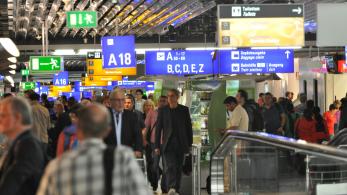
International Tourism to Reach Pre-Pandemic Levels in 2024

International Tourism to End 2023 Close to 90% of Pre-P...

Tourism’s Importance for Growth Highlighted in World Ec...

International Tourism Swiftly Overcoming Pandemic Downturn

Encyclopedia of Tourism pp 1–3 Cite as
Forecasting in Tourism
- Gang Li 3 &
- Haiyan Song 4
- Living reference work entry
- Latest version View entry history
- First Online: 20 April 2022
29 Accesses
Forecasting is the process of predicting certain future events or conditions by analyzing the available information. Forecasting plays an important role in tourism development, marketing, and operations management. Its development in tourism can be traced back to the 1960s. Over the past 60 years, various forecasting approaches and techniques have been developed and applied to tourism demand analysis.
Classification of Methods
Depending on data availability, tourism forecasting methods fall into two broad categories of quantitative and qualitative approaches. Mathematical and statistical principles serve as the technical foundations of quantitative forecasting. Qualitative forecasting relies on intuitive thinking, judgment, and the accumulated experience of experts, and is useful for medium- and long-term planning and strategy development. Examples of qualitative methods in tourism include the Delphi technique and scenario writing, while quantitative approaches are much more diverse...
This is a preview of subscription content, log in via an institution .
Hyndman, R., and A. Koehler. 2006. Another look at measures of forecast accuracy. International Journal of Forecasting 22: 679–688.
Article Google Scholar
Li, H., M. Hu, and G. Li. 2020. Forecasting tourism demand with multisource big data. Annals of Tourism Research 83. https://doi.org/10.1016/j.annals.2020.102912 .
Liu, A., S. Lin, G. Li, and H. Song. 2020. Ex-ante tourism forecasting assessment. Journal of Travel Research . https://doi.org/10.1177/0047287520974456 .
Shen, S., G. Li, and H. Song. 2011. Combination forecasts of international tourism demand. Annals of Tourism Research 38: 72–89.
Song, H., R.T.Q. Qiu, and J. Park. 2019. A review of research on tourism demand forecasting. Annals of Tourism Research 75: 338–362.
Zhang, H., H. Song, L. Wen, and C. Liu. 2021. Forecasting tourism recovery amid COVID-19. Annals of Tourism Research 87. https://doi.org/10.1016/j.tourman.2018.03.006 .
Download references
Author information
Authors and affiliations.
University of Surrey, Guildford, UK
The Hong Kong Polytechnic University, TST East, China
Haiyan Song
You can also search for this author in PubMed Google Scholar
Corresponding author
Correspondence to Gang Li .
Editor information
Editors and affiliations.
School of Hospitality Leadership, University of Wisconsin-Stout, Menomonie, WI, USA
Jafar Jafari
School of Hotel and Tourism Management, The Hong Kong Polytechnic University, Hong Kong, Hong Kong
Honggen Xiao
Section Editor information
Makerere University Business School, Kampala, Uganda
Peter U. C. Dieke PhD
Rights and permissions
Reprints and permissions
Copyright information
© 2022 Springer Nature Switzerland AG
About this entry
Cite this entry.
Li, G., Song, H. (2022). Forecasting in Tourism. In: Jafari, J., Xiao, H. (eds) Encyclopedia of Tourism. Springer, Cham. https://doi.org/10.1007/978-3-319-01669-6_88-2
Download citation
DOI : https://doi.org/10.1007/978-3-319-01669-6_88-2
Received : 01 March 2021
Accepted : 03 August 2021
Published : 20 April 2022
Publisher Name : Springer, Cham
Print ISBN : 978-3-319-01669-6
Online ISBN : 978-3-319-01669-6
eBook Packages : Springer Reference Business and Management Reference Module Humanities and Social Sciences Reference Module Business, Economics and Social Sciences
- Publish with us
Policies and ethics
Chapter history
DOI: https://doi.org/10.1007/978-3-319-01669-6_88-2
DOI: https://doi.org/10.1007/978-3-319-01669-6_88-1
- Find a journal
- Track your research
Reimagining the $9 trillion tourism economy—what will it take?
Tourism made up 10 percent of global GDP in 2019 and was worth almost $9 trillion, 1 See “Economic impact reports,” World Travel & Tourism Council (WTTC), wttc.org. making the sector nearly three times larger than agriculture. However, the tourism value chain of suppliers and intermediaries has always been fragmented, with limited coordination among the small and medium-size enterprises (SMEs) that make up a large portion of the sector. Governments have generally played a limited role in the industry, with partial oversight and light-touch management.
COVID-19 has caused an unprecedented crisis for the tourism industry. International tourist arrivals are projected to plunge by 60 to 80 percent in 2020, and tourism spending is not likely to return to precrisis levels until 2024. This puts as many as 120 million jobs at risk. 2 “International tourist numbers could fall 60-80% in 2020, UNWTO reports,” World Tourism Organization, May 7, 2020, unwto.org.
Reopening tourism-related businesses and managing their recovery in a way that is safe, attractive for tourists, and economically viable will require coordination at a level not seen before. The public sector may be best placed to oversee this process in the context of the fragmented SME ecosystem, large state-owned enterprises controlling entry points, and the increasing impact of health-related agencies. As borders start reopening and interest in leisure rebounds in some regions , governments could take the opportunity to rethink their role within tourism, thereby potentially both assisting in the sector’s recovery and strengthening it in the long term.
In this article, we suggest four ways in which governments can reimagine their role in the tourism sector in the context of COVID-19.
1. Streamlining public–private interfaces through a tourism nerve center
Before COVID-19, most tourism ministries and authorities focused on destination marketing, industry promotions, and research. Many are now dealing with a raft of new regulations, stimulus programs, and protocols. They are also dealing with uncertainty around demand forecasting, and the decisions they make around which assets—such as airports—to reopen will have a major impact on the safety of tourists and sector employees.
Coordination between the public and private sectors in tourism was already complex prior to COVID-19. In the United Kingdom, for example, tourism falls within the remit of two departments—the Department for Business, Energy, and Industrial Strategy (BEIS) and the Department for Digital, Culture, Media & Sport (DCMS)—which interact with other government agencies and the private sector at several points. Complex coordination structures often make clarity and consistency difficult. These issues are exacerbated by the degree of coordination that will be required by the tourism sector in the aftermath of the crisis, both across government agencies (for example, between the ministries responsible for transport, tourism, and health), and between the government and private-sector players (such as for implementing protocols, syncing financial aid, and reopening assets).
Concentrating crucial leadership into a central nerve center is a crisis management response many organizations have deployed in similar situations. Tourism nerve centers, which bring together public, private, and semi-private players into project teams to address five themes, could provide an active collaboration framework that is particularly suited to the diverse stakeholders within the tourism sector (Exhibit 1).
We analyzed stimulus packages across 24 economies, 3 Australia, Bahrain, Belgium, Canada, Egypt, Finland, France, Germany, Hong Kong, Indonesia, Israel, Italy, Kenya, Malaysia, New Zealand, Peru, Philippines, Singapore, South Africa, South Korea, Spain, Switzerland, Thailand, and the United Kingdom. which totaled nearly $100 billion in funds dedicated directly to the tourism sector, and close to $300 billion including cross-sector packages with a heavy tourism footprint. This stimulus was generally provided by multiple entities and government departments, and few countries had a single integrated view on beneficiaries and losers. We conducted surveys on how effective the public-sector response has been and found that two-thirds of tourism players were either unaware of the measures taken by government or felt they did not have sufficient impact. Given uncertainty about the timing and speed of the tourism recovery, obtaining quick feedback and redeploying funds will be critical to ensuring that stimulus packages have maximum impact.
2. Experimenting with new financing mechanisms
Most of the $100 billion stimulus that we analyzed was structured as grants, debt relief, and aid to SMEs and airlines. New Zealand has offered an NZ $15,000 (US $10,000) grant per SME to cover wages, for example, while Singapore has instituted an 8 percent cash grant on the gross monthly wages of local employees. Japan has waived the debt of small companies where income dropped more than 20 percent. In Germany, companies can use state-sponsored work-sharing schemes for up to six months, and the government provides an income replacement rate of 60 percent.
Our forecasts indicate that it will take four to seven years for tourism demand to return to 2019 levels, which means that overcapacity will be the new normal in the medium term. This prolonged period of low demand means that the way tourism is financed needs to change. The aforementioned types of policies are expensive and will be difficult for governments to sustain over multiple years. They also might not go far enough. A recent Organisation for Economic Co-operation and Development (OECD) survey of SMEs in the tourism sector suggested more than half would not survive the next few months, and the failure of businesses on anything like this scale would put the recovery far behind even the most conservative forecasts. 4 See Tourism policy responses to the coronavirus (COVID-19), OECD, June 2020, oecd.org. Governments and the private sector should be investigating new, innovative financing measures.
Revenue-pooling structures for hotels
One option would be the creation of revenue-pooling structures, which could help asset owners and operators, especially SMEs, to manage variable costs and losses moving forward. Hotels competing for the same segment in the same district, such as a beach strip, could have an incentive to pool revenues and losses while operating at reduced capacity. Instead of having all hotels operating at 20 to 40 percent occupancy, a subset of hotels could operate at a higher occupancy rate and share the revenue with the remainder. This would allow hotels to optimize variable costs and reduce the need for government stimulus. Non-operating hotels could channel stimulus funds into refurbishments or other investment, which would boost the destination’s attractiveness. Governments will need to be the intermediary between businesses through auditing or escrow accounts in this model.
Joint equity funds for small and medium-size enterprises
Government-backed equity funds could also be used to deploy private capital to help ensure that tourism-related SMEs survive the crisis (Exhibit 2). This principle underpins the European Commission’s temporary framework for recapitalization of state-aided enterprises, which provided an estimated €1.9 trillion in aid to the EU economy between March and May 2020. 5 See “State aid: Commission expands temporary framework to recapitalisation and subordinated debt measures to further support the economy in the context of the coronavirus outbreak,” European Commission, May 8, 2020, ec.europa.eu. Applying such a mechanism to SMEs would require creating an appropriate equity-holding structure, or securitizing equity stakes in multiple SMEs at once, reducing the overall risk profile for the investor. In addition, developing a standardized valuation methodology would avoid lengthy due diligence processes on each asset. Governments that do not have the resources to co-invest could limit their role to setting up those structures and opening them to potential private investors.
3. Ensuring transparent, consistent communication on protocols
The return of tourism demand requires that travelers and tourism-sector employees feel—and are—safe. Although international organizations such as the International Air Transport Association (IATA), and the World Travel & Tourism Council (WTTC) have developed a set of guidelines to serve as a baseline, local regulators are layering additional measures on top. This leads to low levels of harmonization regarding regulations imposed by local governments.
Our surveys of traveler confidence in the United States suggests anxiety remains high, and authorities and destination managers must work to ensure travelers know about, and feel reassured by, protocols put in place for their protection. Our latest survey of traveler sentiment in China suggests a significant gap between how confident travelers would like to feel and how confident they actually feel; actual confidence in safety is much lower than the expected level asked a month before.
One reason for this low level of confidence is confusion over the safety measures that are currently in place. Communication is therefore key to bolstering demand. Experience in Europe indicates that prompt, transparent, consistent communications from public agencies have had a similar impact on traveler demand as CEO announcements have on stock prices. Clear, credible announcements regarding the removal of travel restrictions have already led to increased air-travel searches and bookings. In the week that governments announced the removal of travel bans to a number of European summer destinations, for example, outbound air travel web search volumes recently exceeded precrisis levels by more than 20 percent in some countries.
The case of Greece helps illustrate the importance of clear and consistent communication. Greece was one of the first EU countries to announce the date of, and conditions and protocols for, border reopening. Since that announcement, Greece’s disease incidence has remained steady and there have been no changes to the announced protocols. The result: our joint research with trivago shows that Greece is now among the top five summer destinations for German travelers for the first time. In July and August, Greece will reach inbound airline ticketing levels that are approximately 50 percent of that achieved in the same period last year. This exceeds the rate in most other European summer destinations, including Croatia (35 percent), Portugal (around 30 percent), and Spain (around 40 percent). 6 Based on IATA Air Travel Pulse by McKinsey. In contrast, some destinations that have had inconsistent communications around the time frame of reopening have shown net cancellations of flights for June and July. Even for the high seasons toward the end of the year, inbound air travel ticketing barely reaches 30 percent of 2019 volumes.
Digital solutions can be an effective tool to bridge communication and to create consistency on protocols between governments and the private sector. In China, the health QR code system, which reflects past travel history and contact with infected people, is being widely used during the reopening stage. Travelers have to show their green, government-issued QR code before entering airports, hotels, and attractions. The code is also required for preflight check-in and, at certain destination airports, after landing.
4. Enabling a digital and analytics transformation within the tourism sector
Data sources and forecasts have shifted, and proliferated, in the crisis. Last year’s demand prediction models are no longer relevant, leaving many destinations struggling to understand how demand will evolve, and therefore how to manage supply. Uncertainty over the speed and shape of the recovery means that segmentation and marketing budgets, historically reassessed every few years, now need to be updated every few months. The tourism sector needs to undergo an analytics transformation to enable the coordination of marketing budgets, sector promotions, and calendars of events, and to ensure that products are marketed to the right population segment at the right time.
Governments have an opportunity to reimagine their roles in providing data infrastructure and capabilities to the tourism sector, and to investigate new and innovative operating models. This was already underway in some destinations before COVID-19. Singapore, for example, made heavy investments in its data and analytics stack over the past decade through the Singapore Tourism Analytics Network (STAN), which provided tourism players with visitor arrival statistics, passenger profiling, spending data, revenue data, and extensive customer-experience surveys. During the COVID-19 pandemic, real-time data on leading travel indicators and “nowcasts” (forecasts for the coming weeks and months) could be invaluable to inform the decisions of both public-sector and private-sector entities.
This analytics transformation will also help to address the digital gap that was evident in tourism even before the crisis. Digital services are vital for travelers: in 2019, more than 40 percent of US travelers used mobile devices to book their trips. 7 Global Digital Traveler Research 2019, Travelport, marketing.cloud.travelport.com; “Mobile travel trends 2019 in the words of industry experts,” blog entry by David MacHale, December 11, 2018, blog.digital.travelport.com. In Europe and the United States, as many as 60 percent of travel bookings are digital, and online travel agents can have a market share as high as 50 percent, particularly for smaller independent hotels. 8 Sean O’Neill, “Coronavirus upheaval prompts independent hotels to look at management company startups,” Skift, May 11, 2020, skift.com. COVID-19 is likely to accelerate the shift to digital as travelers look for flexibility and booking lead times shorten: more than 90 percent of recent trips in China were booked within seven days of the trip itself. Many tourism businesses have struggled to keep pace with changing consumer preferences around digital. In particular, many tourism SMEs have not been fully able to integrate new digital capabilities in the way that larger businesses have, with barriers including language issues, and low levels of digital fluency. The commission rates on existing platforms, which range from 10 percent for larger hotel brands to 25 percent for independent hotels, also make it difficult for SMEs to compete in the digital space.
Governments are well-positioned to overcome the digital gap within the sector and to level the playing field for SMEs. The Tourism Exchange Australia (TXA) platform, which was created by the Australian government, is an example of enabling at scale. It acts as a matchmaker, connecting suppliers with distributors and intermediaries to create packages attractive to a specific segment of tourists, then uses tourist engagement to provide further analytical insights to travel intermediaries (Exhibit 3). This mechanism allows online travel agents to diversify their offerings by providing more experiences away from the beaten track, which both adds to Australia’s destination attractiveness, and gives small suppliers better access to customers.

Governments that seize the opportunity to reimagine tourism operations and oversight will be well positioned to steer their national tourism industries safely into—and set them up to thrive within—the next normal.
Download the article in Arabic (513KB)
Margaux Constantin is an associate partner in McKinsey’s Dubai office, Steve Saxon is a partner in the Shanghai office, and Jackey Yu is an associate partner in the Hong Kong office.
The authors wish to thank Hugo Espirito Santo, Urs Binggeli, Jonathan Steinbach, Yassir Zouaoui, Rebecca Stone, and Ninan Chacko for their contributions to this article.
Explore a career with us
Related articles.

Make it better, not just safer: The opportunity to reinvent travel

Hospitality and COVID-19: How long until ‘no vacancy’ for US hotels?
A new approach in tracking travel demand

An official website of the United States government
Here’s how you know
Official websites use .gov A .gov website belongs to an official government organization in the United States.
Secure .gov websites use HTTPS A lock ( Lock A locked padlock ) or https:// means you’ve safely connected to the .gov website. Share sensitive information only on official, secure websites.

U.S. Department of Commerce
- Fact Sheets
Was this page helpful?
Fact sheet: 2022 national travel and tourism strategy, office of public affairs.
The 2022 National Travel and Tourism Strategy was released on June 6, 2022, by U.S. Secretary of Commerce Gina M. Raimondo on behalf of the Tourism Policy Council (TPC). The new strategy focuses the full efforts of the federal government to promote the United States as a premier destination grounded in the breadth and diversity of our communities, and to foster a sector that drives economic growth, creates good jobs, and bolsters conservation and sustainability. Drawing on engagement and capabilities from across the federal government, the strategy aims to support broad-based economic growth in travel and tourism across the United States, its territories, and the District of Columbia.
The federal government will work to implement the strategy under the leadership of the TPC and in partnership with the private sector, aiming toward an ambitious five-year goal of increasing American jobs by attracting and welcoming 90 million international visitors, who we estimate will spend $279 billion, annually by 2027.
The new National Travel and Tourism Strategy supports growth and competitiveness for an industry that, prior to the COVID-19 pandemic, generated $1.9 trillion in economic output and supported 9.5 million American jobs. Also, in 2019, nearly 80 million international travelers visited the United States and contributed nearly $240 billion to the U.S. economy, making the United States the global leader in revenue from international travel and tourism. As the top services export for the United States that year, travel and tourism generated a $53.4 billion trade surplus and supported 1 million jobs in the United States.
The strategy follows a four-point approach:
- Promoting the United States as a Travel Destination Goal : Leverage existing programs and assets to promote the United States to international visitors and broaden marketing efforts to encourage visitation to underserved communities.
- Facilitating Travel to and Within the United States Goal : Reduce barriers to trade in travel services and make it safer and more efficient for visitors to enter and travel within the United States.
- Ensuring Diverse, Inclusive, and Accessible Tourism Experiences Goal : Extend the benefits of travel and tourism by supporting the development of diverse tourism products, focusing on under-served communities and populations. Address the financial and workplace needs of travel and tourism businesses, supporting destination communities as they grow their tourism economies. Deliver world-class experiences and customer service at federal lands and waters that showcase the nation’s assets while protecting them for future generations.
- Fostering Resilient and Sustainable Travel and Tourism Goal : Reduce travel and tourism’s contributions to climate change and build a travel and tourism sector that is resilient to natural disasters, public health threats, and the impacts of climate change. Build a sustainable sector that integrates protecting natural resources, supporting the tourism economy, and ensuring equitable development.
Travel and Tourism Fast Facts
- The travel and tourism industry supported 9.5 million American jobs through $1.9 trillion of economic activity in 2019. In fact, 1 in every 20 jobs in the United States was either directly or indirectly supported by travel and tourism. These jobs can be found in industries like lodging, food services, arts, entertainment, recreation, transportation, and education.
- Travel and tourism was the top services export for the United States in 2019, generating a $53.4 billion trade surplus.
- The travel and tourism industry was one of the U.S. business sectors hardest hit by the COVID-19 pandemic and subsequent health and travel restrictions, with travel exports decreasing nearly 65% from 2019 to 2020.
- The decline in travel and tourism contributed heavily to unemployment; leisure and hospitality lost 8.2 million jobs between February and April 2020 alone, accounting for 37% of the decline in overall nonfarm employment during that time.
- By 2021, the rollout of vaccines and lifting of international and domestic restrictions allowed travel and tourism to begin its recovery. International arrivals to the United States grew to 22.1 million in 2021, up from 19.2 million in 2020. Spending by international visitors also grew, reaching $81.0 billion, or 34 percent of 2019’s total.
More about the Tourism Policy Council and the 2022 National Travel and Tourism Strategy
Created by Congress and chaired by Secretary Raimondo, the Tourism Policy Council (TPC) is the interagency council charged with coordinating national policies and programs relating to travel and tourism. At the direction of Secretary Raimondo, the TPC created a new five-year strategy to focus U.S. government efforts in support of the travel and tourism sector which has been deeply and disproportionately affected by the COVID-19 pandemic.
Read the full strategy here

Share this page
Travel and tourism pivotal to economic growth beyond the provision of jobs

Qatar Tourism extends throwback Food Festival for Eid Al Fitr 2024

QU CBE faculty member in key regional post
Man found dead in floodwaters at Greenbank, with Bureau of Meteorology forecasting widespread rain across Queensland
A 71-year-old man who died in floodwaters south of Brisbane is being remembered as a "kind soul" and a car enthusiast.
Peter Wells died after his car was swept away by floodwaters on Begley Road in Greenbank overnight.
Police were called to conduct a welfare check at a private property around 5:20am and found the body of a 71-year-old man nearby.
His white ute was located around 50 metres down a river embankment, wedged between trees off Begley Road.
Friends have paid tribute to the grandfather, who was loved and respected in the community. Local man Keith, who only wanted to use his first name, said he'd known Peter for around eight years.
"We had a really good friendship and really bonded, we always helped each other out," he said.
He said Mr Wells was known around the world for collecting vintage Chevrolets.
Floodwaters have now receded but tall grass, which surrounds the river embankment, was completely flattened by the strength of the current.
Locals in the semi-rural area said the suburb was blanketed in heavy rain on Wednesday night, and that they'd never seen anything like it.
One man said he stopped counting his rain gauge after it hit 100 millimetres in one hour.
On Wednesday night 150 millimetres of rain fell in Ipswich, west of Brisbane, while other parts of the Scenic Rim recorded between 50 and 100 millimetres.
A major flood warning has been issued for the Bremer River at Walloon, with moderate flooding already developing in the area.
Acting Police Commissioner Steve Gollschewski said an investigation was underway into the man's death.
"It's a tragic incident," he said.
"Our investigation's underway as to what the circumstances were – whether it was in fact on the road, or in a private property.
"Early days on that yet but clearly an absolutely tragic circumstance."
He said emergency services had to perform another rescue after people became trapped in floodwaters in the same area.
"We see this every time, people don't recognise the risk, they don't assess the risk, and they take risks by driving into floodwaters or areas that they're not certain about," he said.
'Never seen it like this before'
Lower Landsowne, about 60 kilometres south of Tambo, had more than 200mm of rain in less than a day, property manager Andrew Turnbull said.
"I woke up this morning to see a mob of rams stranded on a bit of an island so I went over and sorted them out," he said.
"I've never seen it flood like this before."
The consistent rain has been welcomed by graziers in the state's south-west, although many in the area between Tambo and Augathella will be flooded in.
Mr Turnbull expects it'll be up to three weeks before he can get out, but has prepared for it.
"If anything else is needed desperately, hopefully the river will come down enough that I can cross it.
"If the river is still up then I will probably just get a chopper in to get us supplies."
Widespread rain is forecast for the remainder of Queensland's school holiday period, with the Bureau of Meteorology (BOM) predicting drenching falls in parts of the south-east.
The BOM's Harry Clark said big falls could also hit the southern interior — with totals of 200 millimetres or more forecast — due to the threat of isolated, stationary storms.
The worst wet weather will last right into next week and cause possible flooding in Charleville, Roma, St George and Goondiwindi.
Flooding out west
A flood watch for that region was issued by the BOM late on Wednesday afternoon and the Landsborough Highway was closed on Thursday morning near Augathella, north of Charleville.
"With the majority of rainfall [predicted] to enter through inland Queensland, there is a higher risk of flooding for the south-east as well", Mr Clark said.
The State Emergency Service area controller in Charleville is warning people not to drive on dirt roads
"There's no need to travel on dirt roads, apart from cutting up the road and getting yourself bogged, it just causes long term damage," area controller John Wallace said.
On Wednesday afternoon, BOM was monitoring a potential low as it headed south.
A high-pressure system was directing moist easterly winds onto the New South Wales and Queensland coast.
Mr Clark said that would combine with an upper trough/low to bring rain and thunderstorms to southern Queensland and much of eastern NSW.
"Queensland is on the tail end of the system, but it is more likely to bring some heavier rainfall for NSW going into Friday," he said.
"There is a chance they will see falls there of 200 to 300mm, and possible flooding."
Where will it rain?
Holiday-makers on the Gold Coast have been warned to brace for heavy falls, of up to 75mm a day, through the weekend.
Meanwhile, the sun in Brisbane will shine more than it did last week, but the forecast predicts isolated showers of up to 20mm over the next four days.
Anyone heading up north to Cairns will enjoy better weather, after the onslaught of ex-Tropical Cyclone Jasmine and weeks of rain into Easter, with just a few scattered showers forecast this week.
Although Mr Clark warned of off-shore winds of up to 45 kilometres per hour, just below the strong wind warning level.
"Certainly would feel it out on the water, so probably not the most pleasant of conditions on the open ocean," he said.
- X (formerly Twitter)
Related Stories
A la niña watch has been called, but australia's weather service says there is a lot more to unpack.
The $980 million flood catastrophe that changed Brisbane forever
- Charleville
- Goondiwindi
- Port Douglas
- Tourism and Leisure Industry
Text: A A A Print Society
China's tourism booms during qingming festival holidays.
China's consumption market during the just-ended Qingming Festival holidays showed better-than-expected performance, underscoring the strong vitality and potential of the economy while injecting new momentum in driving stable economic recovery.
During the Qingming Festival holidays, lasting from Thursday to Saturday, ticket bookings for popular domestic scenic spots surged by 5-fold compared with the same period last year, noted a report from a Chinese online travel agency Qunar sent to the Global Times on Saturday.
About 119 million domestic tourist trips were made during the holidays, up 11.5 percent from the same period in 2019, according to the Ministry of Culture and Tourism. The trips were estimated to bring in 54 billion yuan ($7.56 billion) in tourist revenue, an increase of 12.7 percent from 2019.
Many tourists kicked off the holidays with short-distance journeys. Notably, Tianshui in Northwest China's Gansu Province and Kaifeng in Central China's Henan Province - which have become internet sensations lately - saw the amount of hotel bookings jump by 12-fold and 4.5-fold respectively, according to Qunar.
Crowds appeared across tourist spots in China as many struggled to reach their destinations. A Beijing resident surnamed Li told the Global Times that his family has to wait for about two hours to park the car at the Juyongguan section of the Great Wall in Beijing on Thursday because there are so many tourists.
According to film ticketing platform Maoyan, the box-office revenue has reached 823 million yuan for the holidays, surpassing last year.
The service sector now contributes to around 60 percent of China's economic growth. The robust recovery of tourism, hospitality and transport sectors will boost the overall recovery of domestic consumption and contribute to stable economic recovery, Xu Xiaolei, a marketing manager at China's CYTS Tours Holding Co, told the Global Times on Saturday.
The potential of the consumption market is set to be further unleashed during the upcoming May Day holidays, Xu said, noting the surge of China's consumption market reflects the strong vitality and potential of the economy.
Stable recovery
In addition to the robust recovery in the cultural and tourism sectors, the country's manufacturing purchasing managers' index (PMI) posted better-than-expected result in March, indicating notable increase in internal demand.
Analysts said that the world's second-largest economy got off to a good start in the first quarter of 2024, laying a solid foundation for achieving the pre-set annual GDP growth target of around 5 percent.
"Between January and March, China's economic growth rate is expected to reach around 5 percent on a yearly basis, supported by a couple of factors including consumers' increased willingness to spend, stable infrastructure and manufacturing investment as well as improved external environment," Wen Bin, chief economist from China Minsheng Bank, told the Global Times on Saturday.
There are multiple aspects where Chinese authorities can step up efforts in the second quarter to bolster the upswing recovery of the economy, according to Wen.
This year's Government Work Report outlined an array of measures to boost growth this year. According to the report, a proactive fiscal policy and a prudent monetary policy will be continued in 2024, and a series of tasks will be taken to modernize the industrial system and develop new quality productive forces at a faster pace.
Wen said the central bank is expected to strengthen efforts to enhance "precision and effectiveness" of monetary policies so as to inject new momentum to the high-quality development of the economy. On the one hand, efforts should be made to boost economic structure adjustment, economic transformation and upgrade and the transition of old and new momentums, while on the other hand, the authorities should better meet reasonable consumption and fund-raising needs with targeted measures, he said.
Cao Heping, an economist at Peking University, said he is optimistic about the country's GDP growth rate in the first quarter. "The development of new quality productive forces has triggered the new driver of China's development," Cao told the Global Times, noting the country will remain the main driver of world economic growth in 2024.
Positive prospect
Driven by China's stable economic recovery so far this year, foreign-funded companies have voted with their feet to briskly expand investment in China for unprecedented opportunities amid the country's high-level opening up.
In January, US retail giant Costco Wholesale opened a new store in Shenzhen, Guangdong Province, which is the sixth Costco store on the Chinese mainland. The number of registered members surpassed 140,000 on the first day alone, setting a record globally, according to local media outlet Shenzhen Daily.
On March 21, US smartphone maker Apple inaugurated its largest retail store on the Chinese mainland in Shanghai, with Apple CEO Tim Cook opening the doors of the new store and welcoming Chinese consumers.
During a meeting with Chinese Commerce Minister Wang Wentao on March 22, Cook said China is an important market with a rich talent pool and innovation vitality, and a crucial supply chain partner for Apple. He reaffirmed that Apple is committed to a long-term development in China and plans to increase investment in China's supply chain, research and development, and marketing.
In order to steadily promote high-level opening-up and make greater efforts to attract and utilize foreign investment, the General Office of the State Council issued an action plan on March 19. The action plan proposes 24 measures across five aspects, including expanding market access, enhancing appeal to foreign investment and fostering a level playing field.
The Chinese government is cultivating new quality productive forces, signifying the country is on the correct development trajectory, John Ross, a senior fellow at the Chongyang Institute for Financial Studies, told the Global Times in a recent interview in Beijing.
Based on observations and research over the past 30 years related to China's economy, there is no reason why China cannot meet its 2024 GDP growth target, and undoubtedly, the country will remain the main driver of world economic growth as it has for the past 40 years, he said.

Related news
Cities that went viral shift their focus to sustainable tourism
China's outbound tourism thrives during Chinese New Year holidays

First giant panda born in South Korea leaves for China

China launches Yaogan satellite

Strong earthquake causes building collapse in Taiwan

Exploring China's germplasm resources 'Noah's Ark'

Cultural relics of Xia, Shang, Zhou dynasties on display in Hong Kong
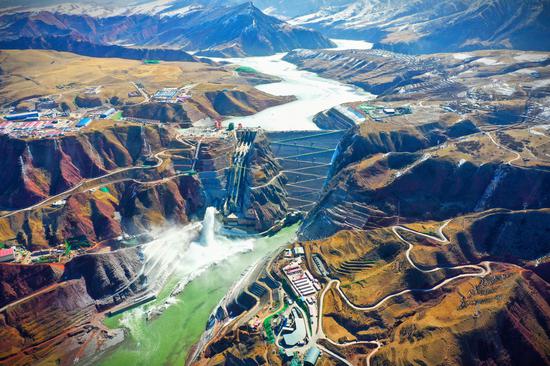
First unit of China's high-altitude connected to grid

Palace Museum 'meets' Palace of Versailles
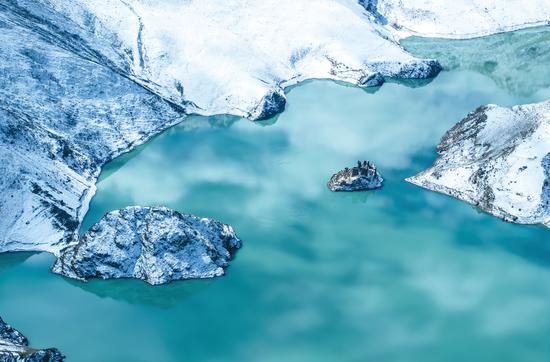
Translucent Manla reservoir in Xizang
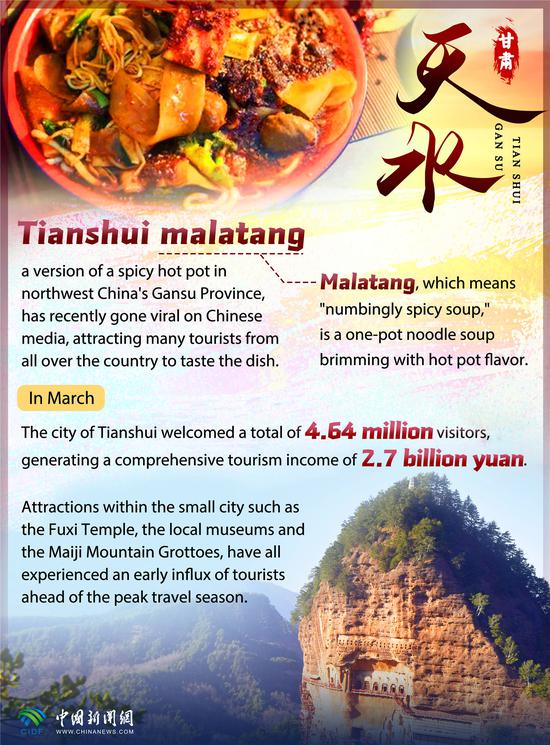
Northwest China's Tianshui spicy hot pot goes viral on social media
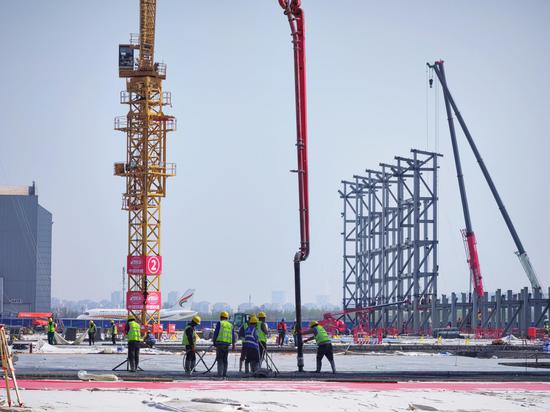
2nd Airbus A320 assembly line project under construction in Tianjin

Nyingchi greets peach blossoms

Annual Easter Parade and Bonnet Festival held in New York City

Paris 2024 official stamp unveiled in France
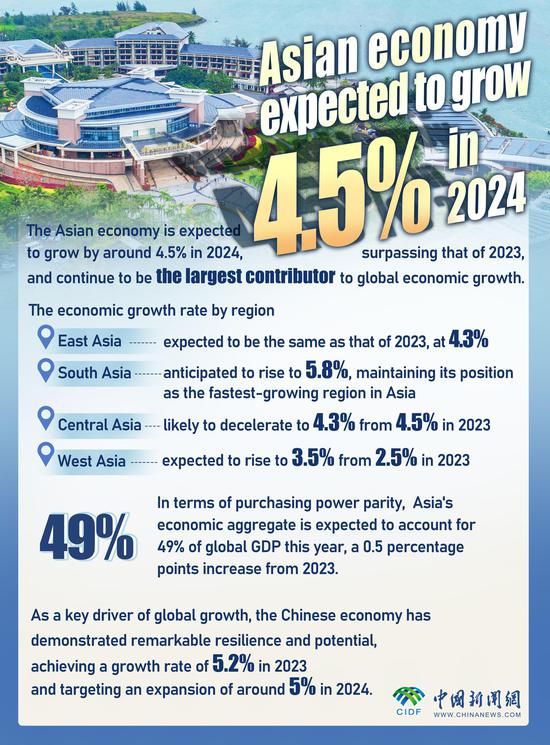
In Numbers: Asian economy forecast to grow 4.5 pct in 2024, report says

Serfs' Emancipation Day celebrated in Xizang

Appearance of Chinese emperor from 1,500 years ago revealed

Magnificent scenery of Qiantang River tidal bore in Zhejiang
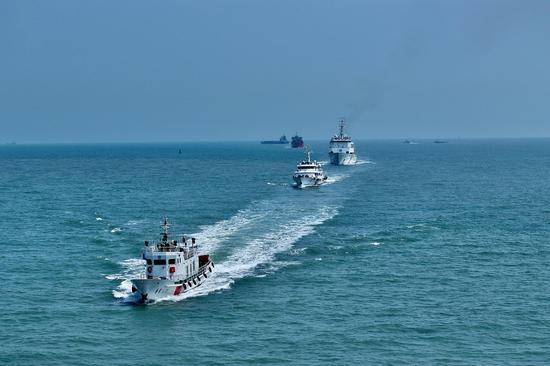
Marine authorities conduct joint patrol mission in waters of Taiwan Strait

2024 New York International Auto Show kicks off
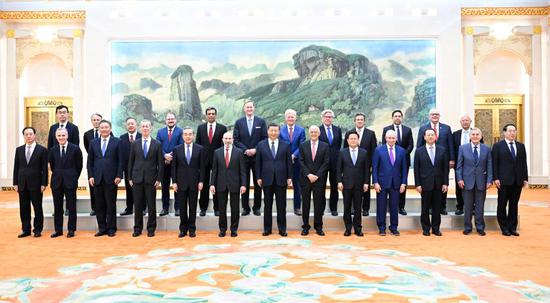
Xi meets U.S. guests
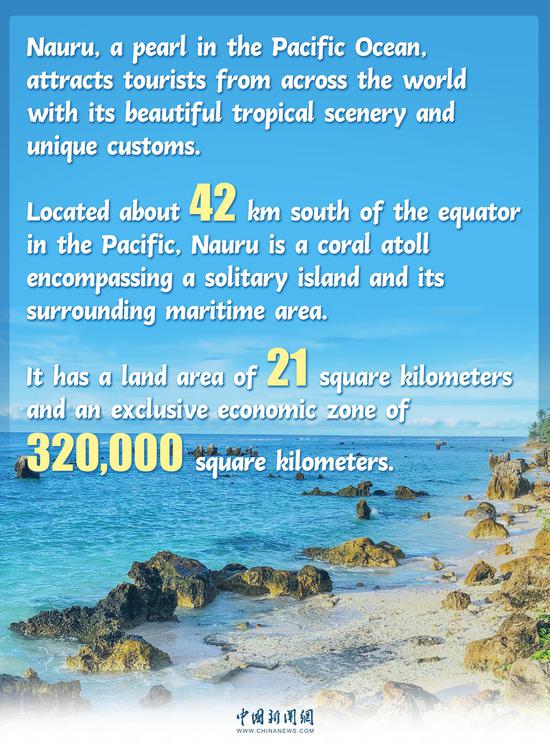
Culture Fact: Things you must know about Nauru
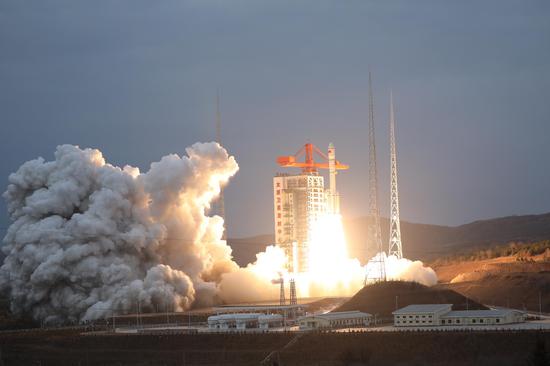
China sends Yunhai-3 02 satellite into space

Tea picking robot operates in harvest season
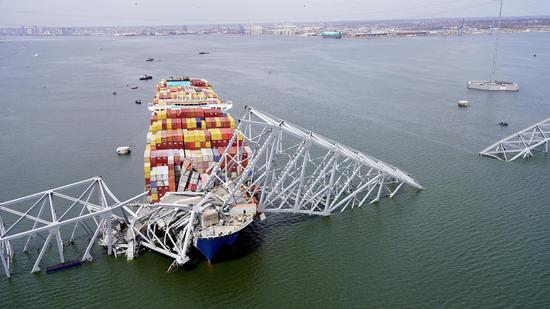
Baltimore bridge taken down by cargo ship
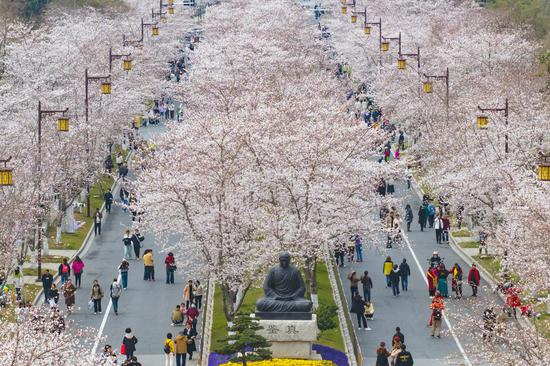
Ancient city adorned with blooming cherry blossoms

In Numbers: China and Dominica celebrate 20 years of diplomatic ties
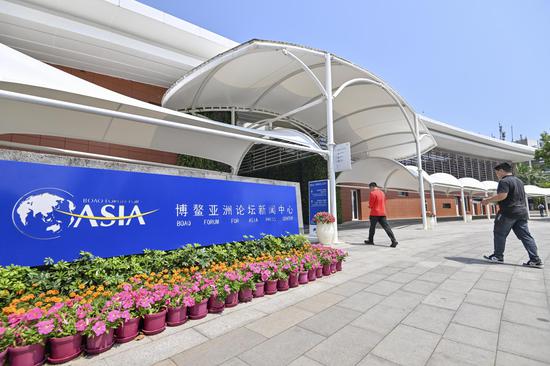
Media center of Boao Forum for Asia Annual Conference 2024 opens

30 Buddhist relics donated to Chinese Mainland

Electromagnetic storms spur auroras in 'China's cold pole'
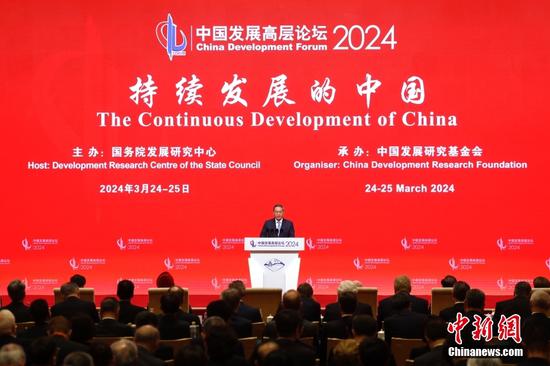
China Development Forum 2024 opens in Beijing

2 mln private vehicles pass through Hong Kong-Zhuhai-Macao Bridge

Russia mourns victims of deadly terrorist attack

Blooming cole flowers create water-painting scene in Sichuan
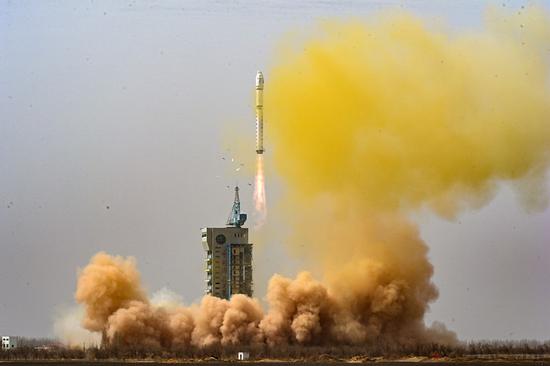
China's space environment monitoring satellites sent into space

China's first self-developed hydrogen-powered urban train completes test run
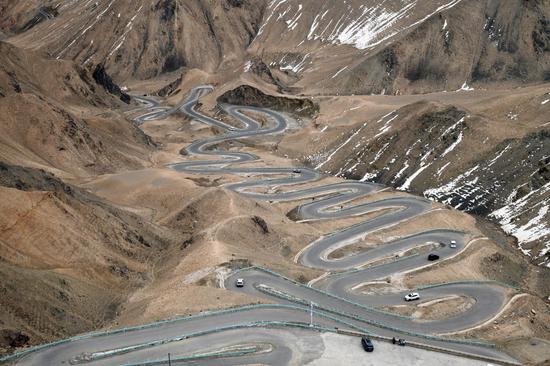
Zigzag Panlong road reopens to traffic after seasonal hibernation
Most popular in 24h, more top news.
- Spring sowing in China in positive situation: report
- Chinese vice-premier holds talks with U.S. treasury secretary
- 750 million cross-regional trips made during 3-day Qingming holiday
- Kaifeng's star matchmaker taking leave of one month
- Asian cinema ready to unite

London Tourist's Low-carbon Trip to Lushan: Warmth at an Altitude of a Thousand Meters

Culture Fact: Take a bite of qingtuan and taste the flavor of spring

Plan Your Trip to Elektrostal: Best of Elektrostal Tourism
Essential elektrostal.

Elektrostal Is Great For
Eat & drink.

- Apelsin Hotel
- Elektrostal Hotel
- Apart Hotel Yantar
- Mini Hotel Banifatsiy
- Restaurant Globus
- Amsterdam Moments
- Cafe Antresole
- Viki Cinema
- Statue of Lenin
- Park of Culture and Leisure
- Elektrostal
Elektrostal Weather Forecast
Now 19:11, 08 Apr
- Sunrise: 05:37 Sunset: 19:19
- Daylight: 13:42
- Moon Phase: New moon
- Read more about Sunrise
Daily weather forecast
Today 08 April, weather in Elektrostal +64°F. Overcast clouds, Gentle Breeze, West 7.2 mph. Atmosphere pressure 29.4 inHg. Relative humidity 65%. Tomorrow's night air temperature will drop to +50°F, wind will change to Southwest 2.7 mph. Pressure will remain unchanged 29.4 inHg. Day temperature will not rise above the mark +66°F, and night 10 April will not fall below +50°F. The wind will be West within 1.1mph. More
- Monday 08 April +64° +43°
- Tuesday 09 April +66° +50°
- Wednesday 10 April +68° +50°
- Thursday 11 April +66° +54°
- Friday 12 April +59° +46°
- Saturday 13 April +52° +48°
- Sunday 14 April +52° +36°
Day and night temperatures in Elektrostal
Interactive graph of the temperature in Elektrostal for the period 08 - 14 April . The minimum value of the daily temperature is expected at around +52 °F , the maximum is expected at around +68 °F . At night the minimum temperature will be +36 °F and the maximum +54 °F
Weather conditions for 7 days
Weather in large and nearby cities.
Weather in Moscow +59°
Khimki +57°
Balashikha +59°
Podol’sk +59°
Fryazino +55°
Elektrougli +61°
Elektrogorsk +61°
Drezna +61°
Chernogolovka +59°
Bykovo +61°
Medvezh’i Ozëra +61°
Zhukovskiy +61°
Kraskovo +61°
Losino-Petrovskiy +61°
Zheleznodorozhnyy +61°
Staraya Kupavna +61°
Danilovo +61°
Konyashino +61°
Elektrostal 7-Day Weather Forecast
Air temperature, °C
Real feel, °C
Average daily temperature, °C
Average wind speed, m/s
Wind gusts, m/s
Wind direction
Birch pollen, points
Grass pollen, points
Ragweed pollen, points
Precipitation in liquid equivalent, mm
Falling snow, cm
Snow depth, cm
Pressure, mmHg
Relative humidity, %
UV Index, points
Geomagnetic activity, Kp-index

IMAGES
COMMENTS
The World Travel & Tourism Council (WTTC) represents the Travel & Tourism sector globally. Our Members include over 200 CEOs, Chairpersons and Presidents of the world's leading Travel & Tourism companies from across the world and industries. WTTC works to raise awareness of Travel & Tourism as one of the world's largest economic sectors, supporting one in 10 jobs (319 million) worldwide ...
The World Travel & Tourism Council ... It began releasing tourism impact information around the same time, working with Wharton Econometric Forecasting Associates to develop the data. The WTTC formed a group known as the Tourism Satellite Account (TSA) to compile and release the data. The TSA was recognized by the United Nations Statistical ...
Forecast data are available to download at the bottom of this page. The report contains a written summary and analysis of the forecast data. It presents an overview of the outlook and discusses the drivers and implications of the projected path forward for the tourism sector. It also notes some key risks to the forecasts. Download the report
The report also includes discussions of the following themes: • City Travel is Back • Consumer Trends • Travel & Tourism Investment • Environmental and Social Research (ESR) • Sustainable Aviation Fuel (SAF) • Steps to Sustainability • Capacity Constraints. Lastly, the report contains rankings tables (top 20 countries) for the following indicators:
The global tourism body is forecasting that the sector will grow its GDP contribution to $15.5 trillion by 2033 representing 11.6% of the global economy and will employ 430 million people around ...
Research by WTTC and Oxford Economics also found that US domestic travel and tourism spending is projected to reach over US$1.1 trillion in 2022, outperforming pre-pandemic levels by 11.3 per cent ...
The latest statistics released by the World Travel and Tourism Council (WTTC) show that when considering the direct, indirect, and induced effects on the economy (), the travel and tourism industry contributed 10.3% to total global gross domestic product (GDP) and accounted for 10.4% of global employment in 2019.Given the importance of the tourism industry to the global economy, tourism policy ...
Accordingly, this paper aims to propose and promote the use of new forecasting methods for tourism demand forecasting based on general non-linear "State-Dependent Models" (SDMs) ( Priestley, 1980b) and evaluate their performance against popular and powerful benchmark models representing both parametric and non-parametric forecasting techniques.
The World Travel & Tourism Council (WTTC) has announced its newest economic modeling projecting that U.S. travel and tourism could rebound strongly this year, reaching nearly $2 trillion in U.S ...
The global tourism sector is rebounding at a faster pace than expected this year, despite macroeconomic and geopolitical tensions, but environmental sustainability must be central to its recovery.. That is according to the latest global tourism outlook revealed by the World Travel and Tourism Council on Wednesday at its annual global summit, held for the first time in Africa, in the Rwandan ...
The second UNWTO World Tourism Barometer of the year shows that the sector's swift recovery has continued into 2023. It shows that: Overall, international arrivals reached 80% of pre-pandemic levels in the first quarter of 2023. An estimated 235 million tourists travelled internationally in the first three months, more than double the same ...
The World Travel & Tourism Council (WTTC) has predicted a record-breaking year for travel and tourism in 2024, with the sector's global economic contribution set to reach an all-time high of $11 ...
Forecasting is the process of predicting certain future events or conditions by analyzing the available information. Forecasting plays an important role in tourism development, marketing, and operations management. Its development in tourism can be traced back to the 1960s. Over the past 60 years, various forecasting approaches and techniques ...
Tourism made up 10 percent of global GDP in 2019 and was worth almost $9 trillion, 1 See "Economic impact reports," World Travel & Tourism Council (WTTC), wttc.org. making the sector nearly three times larger than agriculture. However, the tourism value chain of suppliers and intermediaries has always been fragmented, with limited coordination among the small and medium-size enterprises ...
U.S. domestic Travel & Tourism spending is forecast to reach more than $1.1 trillion for the year, surpassing pre-pandemic levels by 11.3%; International traveler spending in the U.S. could see growth of $113 billion, compared to 2020, reaching nearly $155 billion, slightly below (14%) 2019 levels; Employment in the sector could also surpass pre-pandemic levels, reaching nearly 16.8 million ...
Tourism Forecasting: Time-Series Analysis of World and Regional Data. A special issue of Forecasting (ISSN 2571-9394). This special issue belongs to the section "Forecasting in Economics and Management". Deadline for manuscript submissions: closed (30 December 2022) | Viewed by 30656.
Office of Public Affairs. [email protected]. The 2022 National Travel and Tourism Strategy was released on June 6, 2022, by U.S. Secretary of Commerce Gina M. Raimondo on behalf of the Tourism Policy Council (TPC). The new strategy focuses the full efforts of the federal government to promote the United States as a premier destination ...
The World Travel & Tourism Council has forecast a record-breaking year for travel and tourism in 2024, with the sector's global economic contribution set to reach an all-time high of $11.1tn.
Widespread rain is forecast for the remainder of Queensland's school holiday period, with the Bureau of Meteorology (BOM) predicting drenching falls in parts of the south-east.
Tourism Officer with a demonstrated history of working in the government administration industry and various critical tourism/promotional events. <br>Highly skilled in Employee Learning & Development, Relationship Building, Interpersonal Skills, Report Writing, and Project Coordination. <br><br>Represented Australia in the U21 Indoor Hockey Team which participated in the Moscow Nights ...
Danny Liedka, president and CEO of Visit Syracuse, joined Bridge Street to tell us more about the effect of this phenomenon on tourism here in the Salt City. For more information from Visit […]
Sustainable growth. The growth of Travel & Tourism continues to outpace that of the global economy for the ninth consecutive year. What's more, international arrivals, which reached 1.5 billion in 2019, are forecast to reach 1.8 billion by 2030. It is essential, that together, we ensure that this growth is sustainable & inclusive and that it ...
About 119 million domestic tourist trips were made during the holidays, up 11.5 percent from the same period in 2019, according to the Ministry of Culture and Tourism.
A mix of the charming, modern, and tried and true. Apelsin Hotel. 43. from $48/night. Apart Hotel Yantar. 2. from $28/night. Elektrostal Hotel. 25.
The World Travel & Tourism Council ( WTTC) is projecting a record-breaking year for Travel & Tourism in 2024, with the sector's global economic contribution set to reach an all-time high of $11.1 trillion. According to the global tourism body's 2024 Economic Impact Research (EIR), Travel & Tourism will contribute an additional $770BN over ...
Daily weather forecast. Today 05 December, weather in Elektrostal +14°F. Overcast clouds, Light Air, West 3.6 mph. Atmosphere pressure 29.6 inHg. Relative humidity 85%. Tomorrow's night air temperature will drop to +5°F, wind will weaken to 2.5 mph. Pressure will rise and amount to 29.8 inHg. Day temperature will not rise above the mark +7°F ...
Weather in Elektrostal for a week, 7 days weather forecast for Elektrostal, Elektrostal, Moscow Oblast, Russia. View the mobile version. Search for location. Russia / Moscow Oblast / Elektrostal. in Elektrostal fair, +2 °C. Now Today Tomorrow 3 days Weekend. 7 days. 10 days 2 weeks Month.